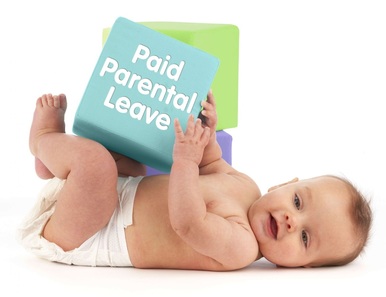As a business owner, it is important to take note of the change in legislation and adapt your employment contracts and staff handbooks to include a paternity benefit policy.
Understanding the Legislation
The Paternity Leave and Benefit Act 2016 commenced on 1 September 2016. The Act enables a “relevant parent” to take two weeks’ paternity leave which must commence within the first 26 weeks of the birth/adoption of a child. Subject to eligibility and notification criteria being met, paternity leave will apply to births/placements that take place on or after the 1 September 2016. During paternity leave, employees who have the necessary PRSI contributions and hold a Public Services Card are entitled to paternity benefit from the Department of Social Protection.
The leave will have to be taken within 26 weeks of the birth of the child, with employers being given four weeks’ notice in writing.
The benefit will be paid by the Department of Social Protection at a rate of €230 per week, the same as maternity benefit, and will based on the same PRSI contribution requirements.
Paternity leave is available to employees who are deemed to be the “relevant parent” of a child. Only one person who is a “relevant parent” in relation to a child can be entitled to paternity leave in respect of that child. There is no qualifying period for entitlement to paternity leave.
So what does this mean for your organisation and what do you need to do to prepare?
Things to Consider
The introduction of this new legislation warrants careful consideration on a number of factors:
· Cost - You will need to decide whether your business will provide a top-up payment to an employee’s paternity benefit. This is where your organisation makes a contribution to cover the difference between the state’s payment and the person’s normal pay.
· Administration – With the new legislation will come more paper work. Depending on the size of your company and the systems you have in place, it is important to equip staff dealing with paternity benefit requests, with the necessary training to handle them.
· Cover staff – It may be necessary to provide cover staff over the period of time that the employee is on paternity leave. For more senior roles, you may need to consider the handover process.
Paternity Benefit Policy
In drawing up your company’s paternity benefit policy, it is essential that you clearly outline the key pieces of information from the legislation and the process for applying for leave.
Below are eight important elements from the CIPD that all paternity benefit policies should include:
- The policy should clarify that the leave is granted to employees to allow them 10 days off to be taken within 26 weeks of the birth of the child.
- Other than certain circumstances outlined in the legislation, the leave will comprise a single period of two weeks.
- The policy should specify when the leave can be taken, and this will need to comply with the legislation.
- While four weeks’ notice of intention is required to avail of the leave, there is provision within the legislation for leave at short notice such as premature births. This should also be included in your policy.
- The benefit will also be available to fathers who are adopting a child and same sex couples and an organisation's policy on paternity leave should reflect this.
- The policy should clarify the internal process for applying for paternity leave, the paperwork to be completed and relevant deadlines.
- The policy should specify if the organisation is going to provide a top-up payment which would reduce the gap between the social welfare payment and the employee’s normal weekly pay and if so, by how much and under what conditions. For example, many women must meet a service requirement (for example, already working with the employer for 24 or 36 months) to get a maternity top-up payment and consideration should be given to adopting similar requirements for male employees to get the benefit of a top-up payment.
- While an employee is on paternity leave, the employee shall be considered to have been in the employment of the employer and be treated as if they had not been absent. Paternity leave will not affect any right related to the employee’s employment other than their right to remuneration during paternity leave.
For more helpful HR tips and advice, CLICK HERE to sign up to our monthly newsletter.


 RSS Feed
RSS Feed